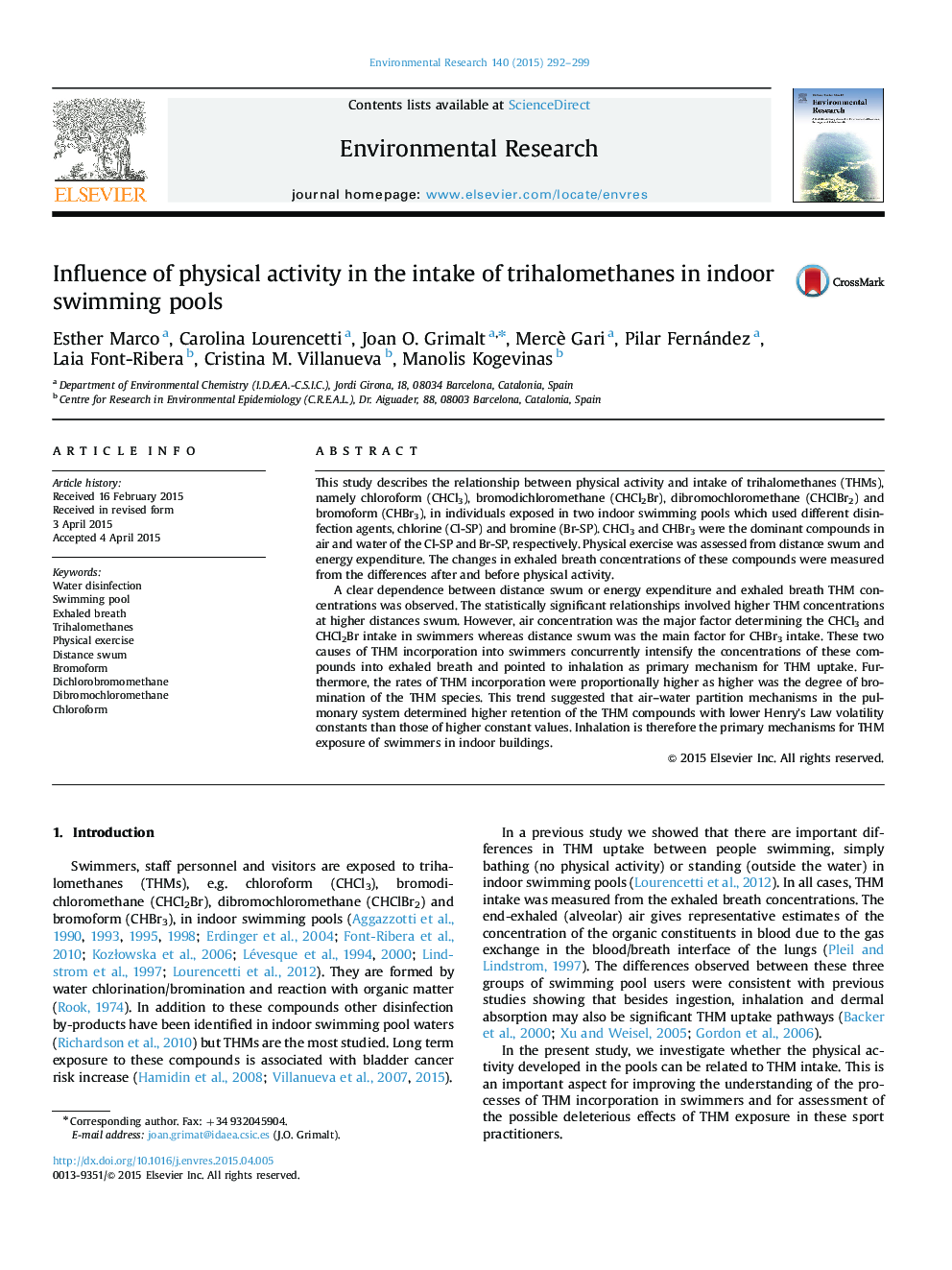| Article ID | Journal | Published Year | Pages | File Type |
|---|---|---|---|---|
| 6351982 | Environmental Research | 2015 | 8 Pages |
Abstract
A clear dependence between distance swum or energy expenditure and exhaled breath THM concentrations was observed. The statistically significant relationships involved higher THM concentrations at higher distances swum. However, air concentration was the major factor determining the CHCl3 and CHCl2Br intake in swimmers whereas distance swum was the main factor for CHBr3 intake. These two causes of THM incorporation into swimmers concurrently intensify the concentrations of these compounds into exhaled breath and pointed to inhalation as primary mechanism for THM uptake. Furthermore, the rates of THM incorporation were proportionally higher as higher was the degree of bromination of the THM species. This trend suggested that air-water partition mechanisms in the pulmonary system determined higher retention of the THM compounds with lower Henry's Law volatility constants than those of higher constant values. Inhalation is therefore the primary mechanisms for THM exposure of swimmers in indoor buildings.
Keywords
Related Topics
Life Sciences
Environmental Science
Health, Toxicology and Mutagenesis
Authors
Esther Marco, Carolina Lourencetti, Joan O. Grimalt, Mercè Gari, Pilar Fernández, Laia Font-Ribera, Cristina M. Villanueva, Manolis Kogevinas,
